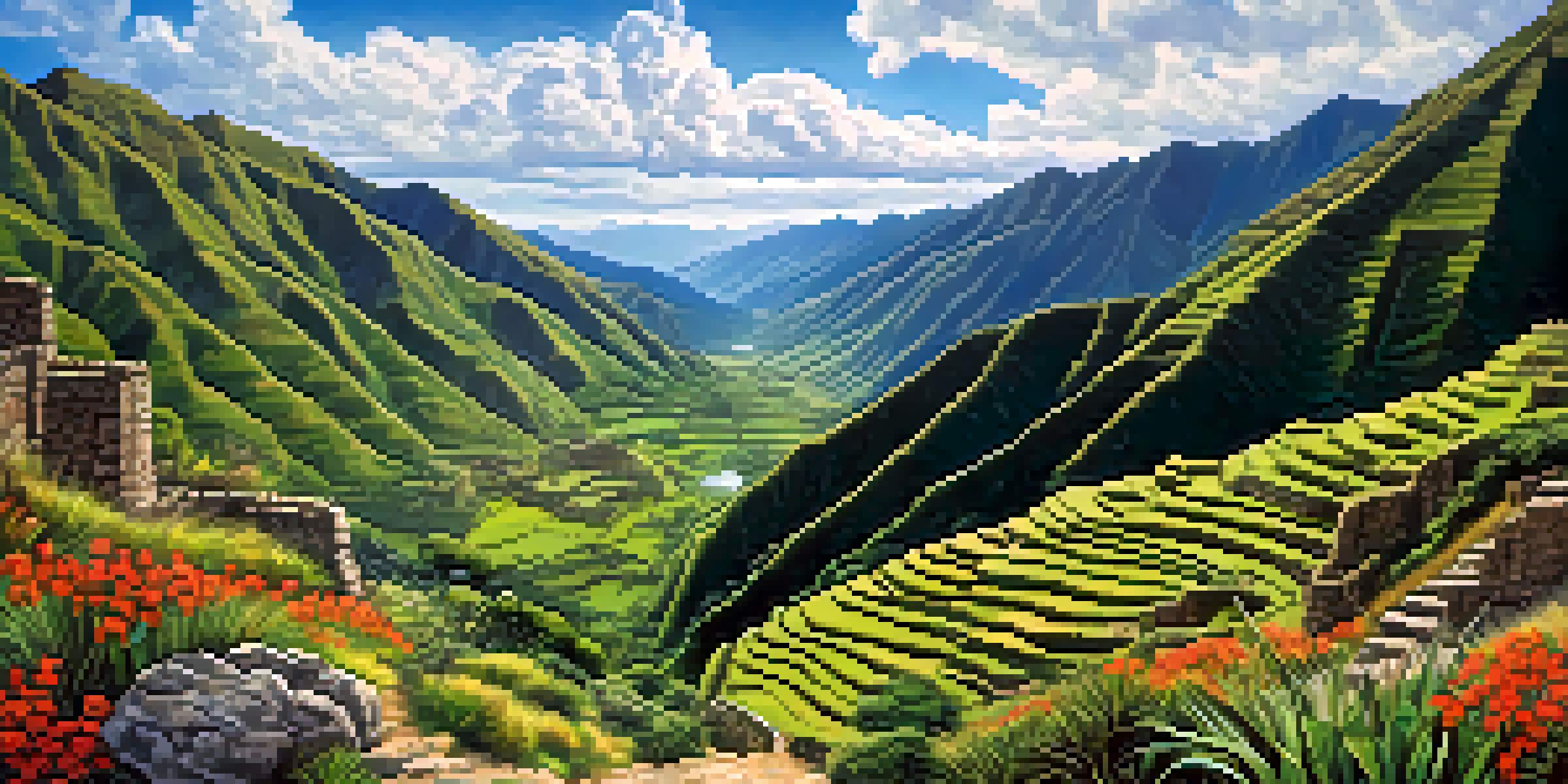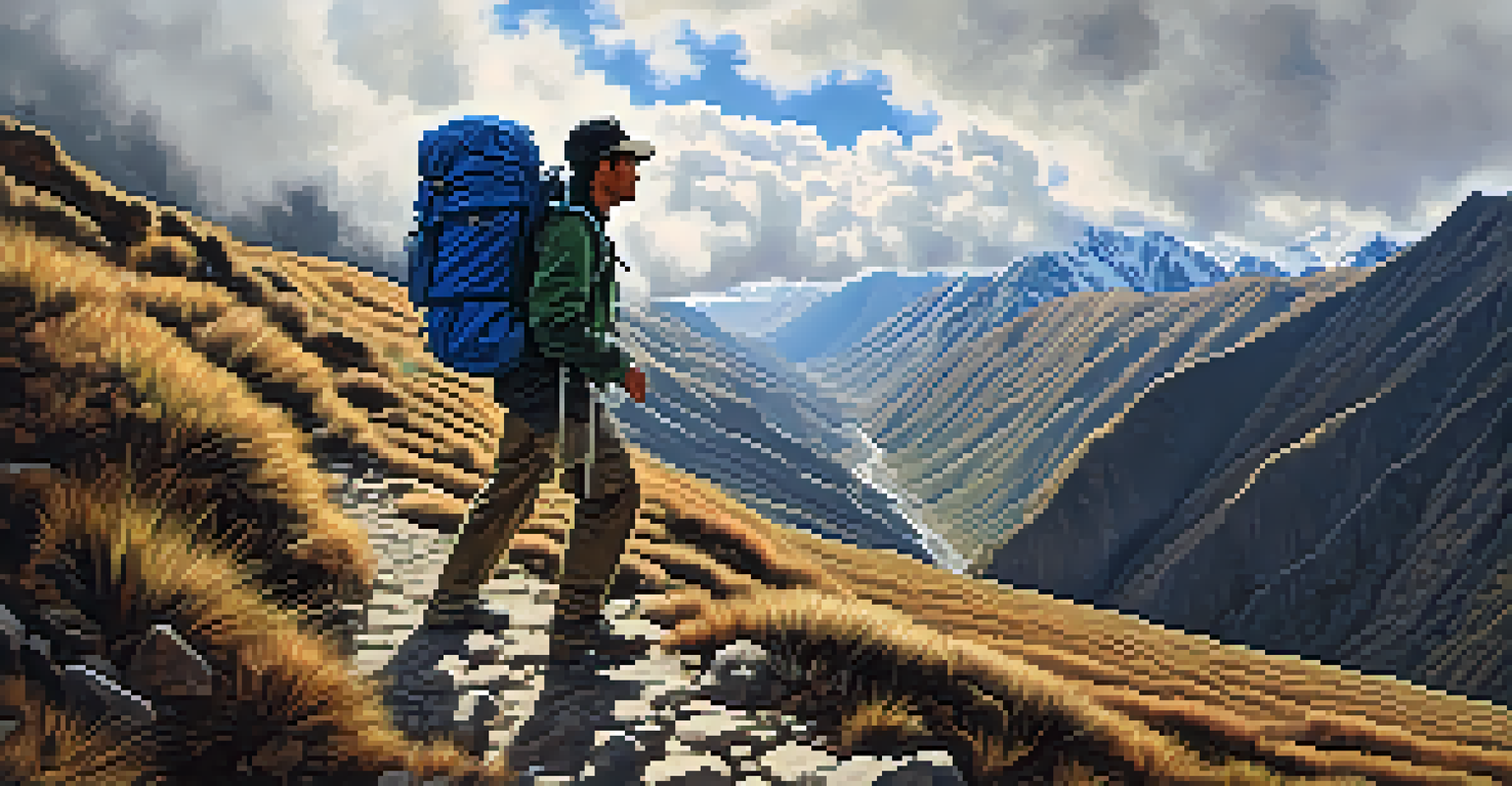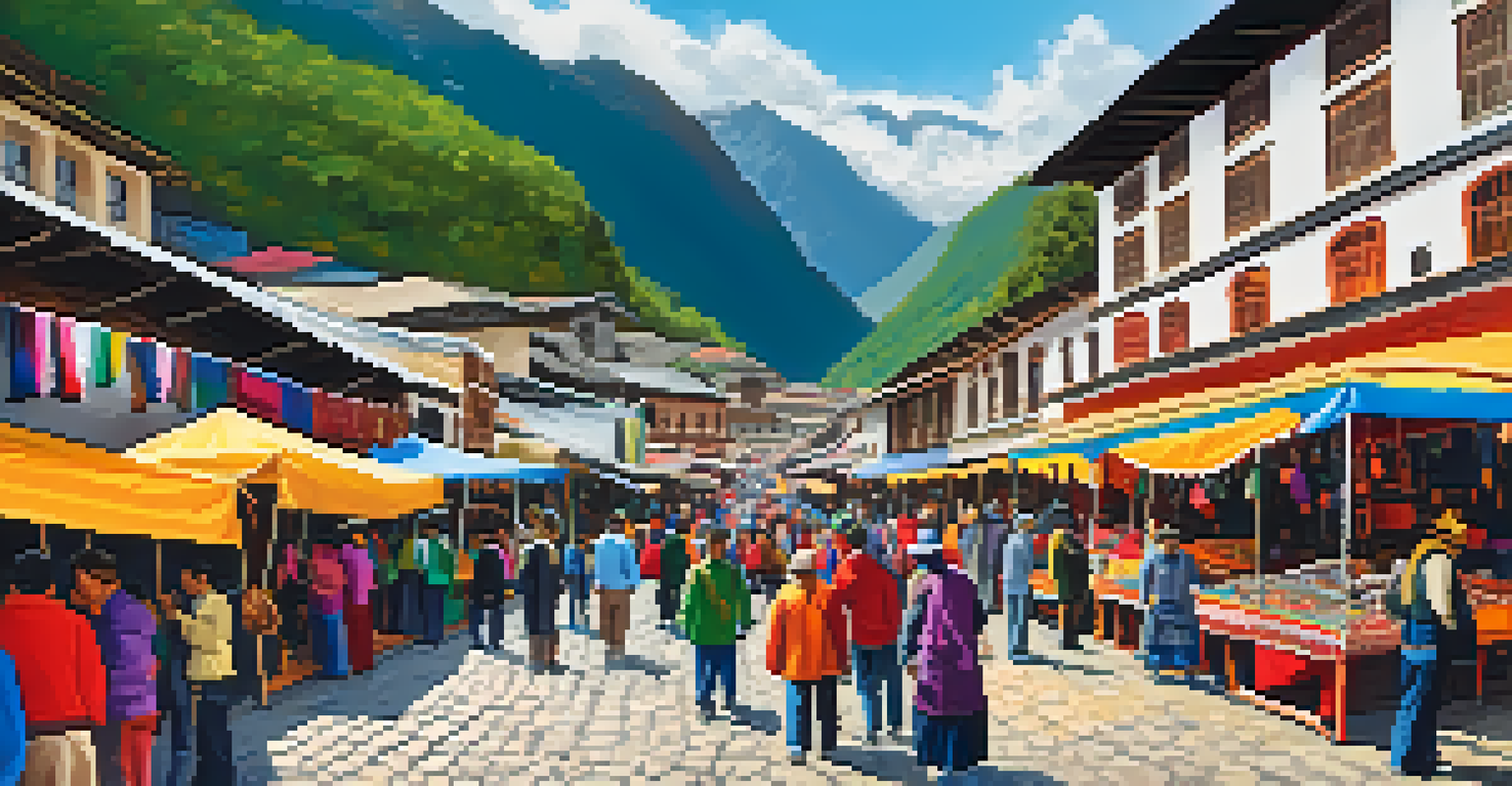Inca Trail to Machu Picchu: Trekking and Adventure Insights

Discovering the Inca Trail: An Overview of the Journey
The Inca Trail to Machu Picchu is not just a hike; it's a remarkable journey through history and nature. Stretching approximately 26 miles, this ancient pathway leads you through stunning landscapes, including cloud forests and alpine tundra. Along the way, you'll encounter impressive archaeological sites, remnants of the Inca civilization that tell stories of a bygone era.
The journey of a thousand miles begins with one step.
This trail is a blend of adventure and culture, making it a must-do for anyone who loves the great outdoors. As you trek, you'll not only challenge your physical limits but also immerse yourself in the rich heritage of the Incas. It’s a perfect adventure for those seeking both thrill and enlightenment.
Related Resource
Before you embark on this trek, it’s essential to understand what to expect. The journey typically takes four days, with varying levels of difficulty, so preparation is key. With the right mindset and gear, you can enjoy every step of this incredible adventure to one of the New Seven Wonders of the World.
Preparation Tips: What You Need Before You Go
Preparing for the Inca Trail is crucial for an enjoyable experience. Start by ensuring you have the right gear, including sturdy hiking boots, weather-appropriate clothing, and a reliable backpack. Don't forget essentials like a reusable water bottle, sunscreen, and insect repellent to keep you comfortable during your trek.

Physical preparation is just as important. Engage in regular cardio exercises and practice hiking with a weighted backpack to build your stamina. Many trekkers find that training on hilly terrain can mimic the trail's challenges and make for a smoother experience.
Prepare for the Inca Trail Adventure
Having the right gear and physical conditioning is essential for an enjoyable and successful trek.
Lastly, consider booking your trek well in advance. The Inca Trail has limited permits available, especially during peak season. Planning ahead will ensure you secure your spot and have ample time to prepare mentally and physically for this breathtaking adventure.
Choosing the Right Season for Your Trek
The best time to hike the Inca Trail is during the dry season, which runs from May to September. During these months, you'll enjoy clear skies and warmer temperatures, making for ideal trekking conditions. However, this is also the peak tourist season, so expect larger crowds along the trail.
To travel is to live.
Conversely, the rainy season from November to March offers fewer crowds but comes with its own set of challenges. Trails can become muddy, and visibility may decrease due to fog and rain. If you choose to trek during this period, be prepared for wet conditions and adjust your expectations accordingly.
Related Resource
Ultimately, the best season for you depends on your personal preferences and comfort levels. Whether you seek solitude or the camaraderie of fellow trekkers, each season offers a unique experience waiting to be discovered.
What to Expect on the Trail: Daily Itinerary
The Inca Trail typically unfolds over four days, each filled with breathtaking views and rich history. On the first day, you'll begin your trek at the trailhead, gradually ascending through lush landscapes while acclimatizing to the altitude. By the end of the day, you'll camp at picturesque locations, surrounded by nature.
Day two is often the most challenging, as you tackle the highest point of the trek, Dead Woman’s Pass. Despite the effort required, reaching this summit rewards you with stunning panoramic views. Afterward, the descent is equally beautiful, guiding you through ancient ruins and diverse ecosystems.
Choose Your Trekking Season Wisely
The best time to hike the Inca Trail is during the dry season from May to September for optimal conditions.
On the third day, you'll explore more archaeological sites and enjoy breathtaking vistas. The final day culminates at the Sun Gate, where you'll catch your first glimpse of Machu Picchu. Arriving at this iconic site is a moment of triumph, celebrating the culmination of your incredible adventure.
Cultural Insights: Understanding the Inca Legacy
The Inca Trail is steeped in rich history, offering insights into the Inca civilization. As you trek, take the time to appreciate the ruins and their significance, such as Wiñay Wayna, an impressive site that showcases the ingenuity of the Incas. Understanding the stories behind these structures enhances your journey and connection to the land.
Engaging with local guides can also deepen your appreciation for the culture. Many guides share fascinating anecdotes and traditions passed down through generations. Their knowledge brings the trail to life, making your experience even more enriching.
Related Resource
Additionally, you'll encounter local communities along the way. Respecting their culture and traditions is vital, as they play a crucial role in preserving the heritage of the Inca Trail. Embrace the opportunity to learn and connect with the people who call this stunning region home.
Safety First: Staying Healthy on the Trek
Safety should be a top priority when trekking the Inca Trail. Acclimatization is key to preventing altitude sickness, which can affect even the fittest hikers. Take time to adjust to the elevation before starting your trek, and stay hydrated throughout your journey.
Listen to your body and don’t be afraid to take breaks. The trail can be physically demanding, and it’s essential to pace yourself. If you start feeling unwell, inform your guide immediately; they are trained to handle such situations and can help ensure your safety.
Experience Cultural Richness Along the Trail
Engaging with local guides and communities enhances your understanding and appreciation of the Inca legacy.
Furthermore, be mindful of your environment. Stick to designated trails to protect the ecosystem and minimize your impact. By being a responsible trekker, you not only keep yourself safe but also contribute to the preservation of this incredible UNESCO World Heritage site.
After the Trek: What to Do in Aguas Calientes
Once you complete the Inca Trail, Aguas Calientes is the perfect place to unwind. This charming town at the base of Machu Picchu offers various accommodations, dining options, and relaxation opportunities. Treat yourself to a soak in the hot springs, which are a popular way to rejuvenate after days of trekking.
Exploring Aguas Calientes also provides a chance to delve deeper into Inca culture. The local market offers handmade crafts, textiles, and souvenirs to commemorate your journey. Engaging with local artisans can be a rewarding experience, allowing you to bring home a piece of the culture.

Additionally, consider visiting the Machu Picchu Museum to further enrich your understanding of the archaeological site you just explored. It’s a great way to reflect on your adventure and learn more about the fascinating history of the Incas.